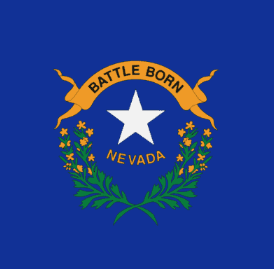 Even without a competitive contest, Nevada still matters.
Even without a competitive contest, Nevada still matters.
Last night President Joe Biden scored another victory in the Democratic primary, while Ambassador Nikki Haley suffered a superficial embarrassment in the Republican primary.
With 82% of precincts in, Biden stands at 93,064 votes (89.4%) while Williamson received 2,944 votes (2.8%). Since he entered the race so late, Congressman Phillips wasn’t able to make the ballot in the Silver State. It’s possible that his supporters chose the ‘None of These Candidates’ line to make their voices heard, and that designation won 6,031 votes (5.8%).
As always, I’ll be watching the total turnout numbers, which at the moment sit at 104,115, on the precipice of passing the 104,883 Democrats who participated in the caucus four years ago. That’s undoubtedly an encouraging sign for the Biden campaign and Nevada Dems.
Meanwhile, over in the Republican Primary, state party leaders shrugged off efforts to transition the state from a caucus to a primary system. Instead, the Nevada GOP set up their own February 8th Caucus to distribute the state’s 26 delegates.
The Haley campaign felt the caucus was a way for the Trump team to rig the contest in his favor, so they didn’t even bother putting her name up for the Feb. 8th contest. Meanwhile, Trump refused to put his own name on tonight’s primary ballot, robbing us of a competitive Nevada contest in either primary.
In that beauty contest, ‘None of These Candidates’ prevailed with 39,876 votes (62.5%) over Nikki Haley’s 19,849 votes (31.1%). While Haley will undoubtedly point out that she basically ignored this state, it’s still notable that so many Republicans showed up to vote today purely to deny her any sort of victory.
Nevertheless, she continues to run full-steam ahead towards February 24th and her home-state South Carolina GOP Primary. She’s still doing events, TV interviews and even a guest appearance on Saturday Night Live.
More importantly, however, Haley is still bringing in cash. According to the latest FEC reports, she raised $16.5 million in January, including $11.7 million in grassroots (less than $200) donations.
Will that translate into results? Well, our Decision Desk HQ/The Hill average of the South Carolina GOP Primary polls puts Donald Trump at 61.2% and Nikki Haley at 30.3%. Those numbers are close to the most recent major survey, a Jan. 26-30 Washington Post/Monmouth University poll, that found Trump with 58% and Haley with 32%.
Speaking of South Carolina, let’s pivot back to last Saturday, when the 2024 Democratic Presidential primaries officially began in the Palmetto State. As expected, President Biden easily won the contest over Congressman Dean Phillips and author Marianne Williamson.
Since the Biden team restructured the calendar to move South Carolina – the state that turned around his 2020 campaign – from fourth to first, it put considerable pressure on them to perform well here.
Rep. Phillips sought to set these expectations especially high, claiming that Biden should be able to secure 95% of the vote. Unfortunately for Phillips, Biden still managed to exceed even that benchmark.
With all of the precincts in, Joe Biden stands at 126,321 votes (96.2%), far ahead of Marianne Williamson’s 2,726 votes (2.1%) and Dean Phillips’ 2,239 votes (1.7%). Biden’s overwhelming performance allowed him to secure all 55 delegates up for grabs, as Williamson and Phillips fell far short of the 15% threshold.
To determine how well Biden and the Democrats did overall, I dug up the turnout numbers going back to 1992, when South Carolina converted from a caucus to a primary. However, since four of the last five incumbent Presidents never actually had to face the South Carolina primary electorate, we don’t really have a good comparison for Biden’s showing.
The sole sitting President to face a competitive South Carolina Primary was George H.W. Bush, who secured 99,558 votes (66.9%) against Pat Buchanan and David Duke back in 1992.
As you can see below, 131,286 voters turned out for the 2024 Democratic primary, a figure that sits right between the two 1992 primaries. We’ll see how this compares to the turnout in the Republican primary on February 24th.
1992 Dem: 116,414
1992 GOP: 148,840
1996 Dem: No Primary
1996 GOP: 273,583
2000 Dem: 9,657 (Caucus)
2000 GOP: 573,101
2004 Dem: 292,383
2004 GOP: No Primary
2008 Dem: 532,468
2008 GOP: 445,677
2012 Dem: No Primary
2012 GOP: 603,770
2016 Dem: 370,904
2016 GOP: 740,881
2020 Dem: 539,263
2020 GOP: No Primary
2024 Dem: 131,286
Of course, I also like to track the election night TV ratings to chart public interest as well. Sadly, the numbers for Saturday night have yet to be released so we’ll have to settle for these.
2012: 5.287 million
2016: 6.2 million (GOP Primary & Dem Nevada Caucus)
2016: 3.155 million (Dem Primary)
2020: 5.661 million
Finally, those aforementioned FEC reports gave us one last insight into next week’s special election to fill George Santos’ seat in New York’s 3rd Congressional District. Democratic nominee Tom Suozzi raised $4.5 million over these past few weeks and entered February with $2.2 million cash on hand. Conversely, Republican nominee Mazi Pilip raised $1.3 million over that time with $630K cash on hand.
You can learn more by reading my preview of the NY-3 Special Election here, and make sure to come back to Decision Desk HQ on Tuesday night to follow the live election results for that contest. Then stay tuned for my recap of that race, and the Feb. 8th Republican Nevada Caucus, on Wednesday!